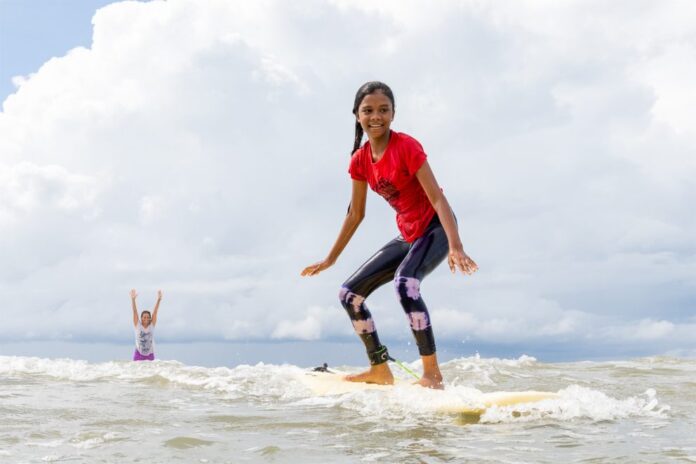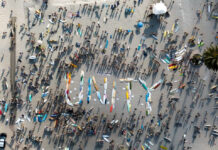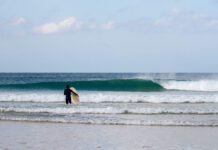All-Female Environment
The creation of a female-only space is perhaps the most impactful – as well as multifaceted – factor to consider. On the one hand, an environment where all participants and instructors are women, such as that of GMW and SeaSisters, often translates to more physical and emotional safety – especially for younger women who are usually expected to stay away from boys after reaching puberty. Moreover, a space without men also increases the chances of families giving permission whilst providing women with new support systems and a judgement-free platform to talk about female-related topics. On the other hand, given the low number of qualified female surf instructors in Sri Lanka, initiatives such as GMW and SeaSisters tend to rely on foreign women to take over that role – which means attention must be paid to the cross-cultural elements and power relations between instructors and participants. Likewise, the fact that participants seldom practice surfing outside the facilitated safe space can create dependencies – something that became evident during the COVID-19 pandemic when most volunteers returned to their home countries. Based on these observations, the authors emphasise that “local leadership is important for long-term success, such as the training of local women and the establishment of all-female surf clubs, which gives ownership and paves the way for the younger generation to follow.”
Culturally Appropriate Surf Apparel
Sri Lankan society as a whole expects women to look a certain way and dress modestly – to fit in their own standard of beauty. And whilst many Sri Lankan female surfers strive to explore new possibilities, they are also mindful of respecting their cultural values, e.g. participants and instructors of GMW and SeaSisters are advised to cover their knees and shoulders by wearing t-shirts and leggings. Yet some, particularly those from urban areas, opt for surfing in bikinis, which often incites harassment from men and disapproval from women who deem such openness unseemly. With this contrast in mind, the authors point out the importance of using culturally appropriate surf apparel* and the need for attention on the part of female surfers and SDOs to navigate such socio-cultural gender norms.





